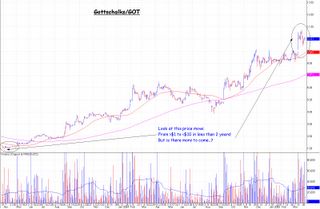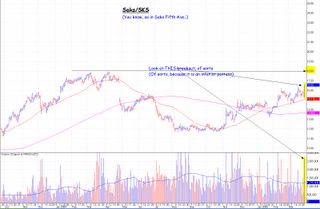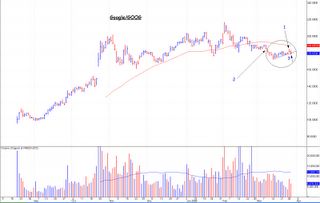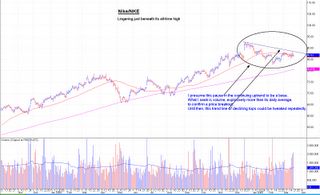Bottom fishing
(NB: To articulate the difference I note above, note that those stocks already running -- breaking away from intermediate term bases within long term uptrends -- will chow down more points more quickly than those stocks that are in process of presumably building a bottom.)
Nonetheless, you prefer the secondary and tertiary stocks (this measure does not necessaily apply to the companies) because you do not like risk. Fine. Let's cycle back to the retailers, and examine two such opportunities. Gottschalks/GOT was already mentioned. Although its very recent action (the past ~2 weeks) appears to be a small base, it likewise appears to be setting up for an assault on higher prices. But do examine the weekly basis chart.
Saks/SKS also looks interesting...
In other words, this rotation from the former leaders into the new leaders -- the chicken cyclicals -- is not limited to the specialty retailers; both GOT and SKS are department stores! (In fact, this rotation to the chicken cyclicals also is not limited to the specialty restaurants. That is, I have not already shared all the leading groups, nor even the participants in each group.) Can you find and share others...?





























































































































